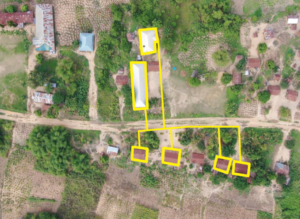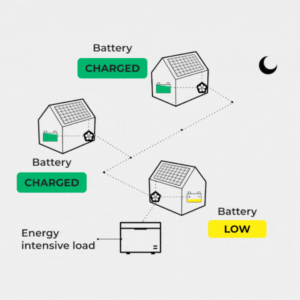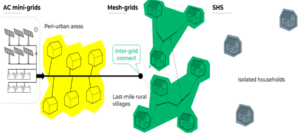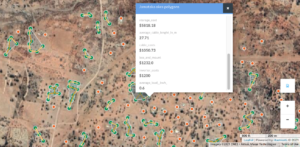Despite Nigeria’s impressive socio-economic growth in recent years, achieving nationwide energy access remains a formidable challenge. There are currently about 85 million Nigerians without access to reliable electricity. Many of them reside in rural communities that are extremely difficult to reach due to complex terrain and inadequate transportation infrastructure. Historically, this inaccessibility has made ongoing operations and maintenance (O&M) of existing infrastructure prohibitively expensive. However, improvements in technology, especially IoT, are now enabling project developers to service end-users remotely.
This medium has manifested in the widespread adoption of solar home systems (SHS) and mini-grids systems coupled with innovative business models such as Pay-As-You-Go (PAYG). Furthermore, with top-down support from regulators, the World Bank, and the African Development Bank (AfDB), initiatives like the Nigeria Electrification Programme managed by the Rural Electrification Agency (REA) make last-mile electrification an increasingly attractive opportunity for the public and private sector.
To add another dimension, companies currently working in the energy access space have recently transitioned from the nascent Energy-as-a-Service models to an Everything-as-a-Service model. Building adjacent infrastructure to provide services like transport, clean water, health, cooling, and education helps foster a productive ecosystem that cultivates prosumer behaviour whilst increasing project revenues. This approach has gained significant traction; however, reliable access to electricity persists as a bottleneck to maximising returns on investment.
Like PAYG, SHS and centralised AC mini-grids, conventional energy infrastructure has made admirable progress towards energising underserved/unserved communities over the past decade. With optimised technologies like mesh-grids growing in recognition, the solution space is fitter now, more than ever, to address all market segments – from peri-urban townships with medium-high energy demands to standalone rural households that only run a handful of lightbulbs.

An aerial view of Onono Village in Anambra State, Nigeria, was recently energized by a mesh grid
The rise of mesh-grids has unlocked a large chunk of the addressable market: rural last-mile villages. Last-mile villages like Onono in Anambra state are characterised by the irregular household clusters dotted across a vast area and highly variable load demands – strongly tied to seasonal agricultural activities. Before mesh-grids, electrification proposals for this type of settlement was caught awkwardly between mini-grids and PAYG SHS. However, Mesh-grids excel at minimising costs per kWh under these conditions due to their modular, decentralised architecture; hence they have quickly garnered the attention of last-mile energy companies.

How mesh-grids work
Mesh-grids differ from mini-grids by leveraging the distributed placement of solar panels and batteries amongst individual households. By doing this, the majority of energy is consumed where it’s generated, while excess power is shared autonomously to interconnected households with greater demand. Although like mini-grids, mesh-grids can also be connected to other mini-grids and the national grid if needed.

Mini-grids, mesh-grids and SHS, are all tailored to different settlement types.
Project developers can now utilise remote software to analyse site viability, evaluate project pipeline and identify Least Cost of Electrification (LCOE) methods without conducting an in-field audit. In addition, developers can utilise raw GIS satellite data to simulate network layouts and upfront costs with a granular level of detail, resulting in days saved during the project planning phase.

Okra Solar’s LCOE network planning simulation: orange dots represent LCOE via standalone configuration, green dots represent LCOE via mesh-grids.
In addition, developers know how to blend the right amount of each available solution on a project-by-project basis and how to foster a top-down meets bottom-up ecosystem that cultivates prosumer behaviour. The road to 100% electrification in Nigeria is not limited to a single technological approach, nor is it limited to a single group of stakeholders. Cooperation between complimentary service providers like Telco, water, health, and education is also necessary for building a conducive ecosystem where all stakeholders can thrive. There has never been a more exciting time to get #PowerToThePeople of Nigeria. If you are inspired to create a future where every brother and sister has equal wattage at their disposal, then we look forward to seeing you in the field.